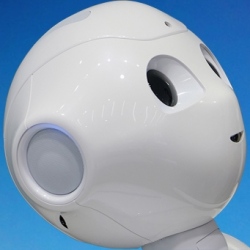
Robots will shave $9 trillion off labour costs within a decade, leaving great swathes of the global society on the historical scrap heap. In a sweeping 300-page report, Bank of America predicts that robots and other forms of artificial intelligence will transform the world beyond recognition as soon as 2025.
“The pace of disruptive technological innovation has gone from linear to parabolic,” it said. Any country that fails to embrace the robot revolution will slip rapidly down the rankings of competiveness, and will be left behind. Manufacturing wages in China have jumped ninefold since 2000, and the country’s workforce is shrinking. China is already the world’s biggest buyer of robots, making up a quarter of the global market.
The costs of robots, "care-bots" for the elderly, "agribots" to plants seeds or pick fruit, commercial drones and artificial intelligence have, on average, dropped by 27pc over the past 10 years, and are expected to fall a further. The price of an advance robotic welder fell from $182,000 in 2005 to $133,000 last year, and its sophistication is increasing all the time. The standard Baxter collaborative "cobot" that works side by side with people on the factory floor, fixing bolts on a conveyor belt, for example, costs just $22,000.
We are coming close to the crucial “inflexion point” when it is 15pc cheaper to use a robot than to employ a human worker.
This threshold has already been crossed in the American, European and Japanese car industries, where it costs $8 an hour to employ a robot for spot welding, compared to $25 for a worker. Hence the eerie post-human feel of the most up-to-date car plants. “We are facing a paradigm shift, which will change the way we live and work,” said the report’s author, Beijia Ma.
The social effect is to squeeze out those at the bottom of the employment ladder, rendering them almost unemployable without re-education. Bank of America describes this as the “displacement of human labour”, estimating that almost half of US jobs could be at risk.
Productivity will soar but wages will not rise at the same pace, if at all. The owners of capital will take an even bigger slice of global income, pushing inequality to yet greater extremes. Labour’s share of the pie peaked at 65pc in 1975 in the rich countries and has already dropped to 58pc.
The workforce will split yet further into the "haves" at the top of education scale and the "have-nots" with just high school qualifications, not to mention the 800m illiterates in the world. It is easy to imagine the explosive political consequences if governments fail to take action to mitigate the effects, yet this may be almost impossible in a borderless, globalised world.
Nor are the middle classes invulnerable. Bank of America said "robo-advisors" using algorithm-based systems will “disrupt” 25m workers in financial and legal services. The Millennial generation, now 18-34 years old, will be the first to switch en masse to these post-human services. This rising cohort already holds $7 trillion of liquid assets and is likely to inherit another $30-$40 trillion from Baby Boom parents.
There is nowhere to go. Labour-saving devices are sweeping everything, everywhere. A single professor can teach a course to 150,000 students through digital technology. We may achieve the dream of prosperity without toil as robots take over, but find ourselves living in a jobless dystopia.
Deflationary Force
Regardless of which viewpoint you think more likely, it should be perfectly clear that robots are a huge deflationary force. The Fed’s (central bank’s in general), that the global economy needs 2% inflation is 100% absurd in the face of such forces.
Attempts by the Fed, by unions, by Obama, and by those screaming for a $15 "living wage" are totally counterproductive.
The higher the wage inflation, the greater the incentive to replace workers with robots.
(Oppinion from the BoA’s report)
